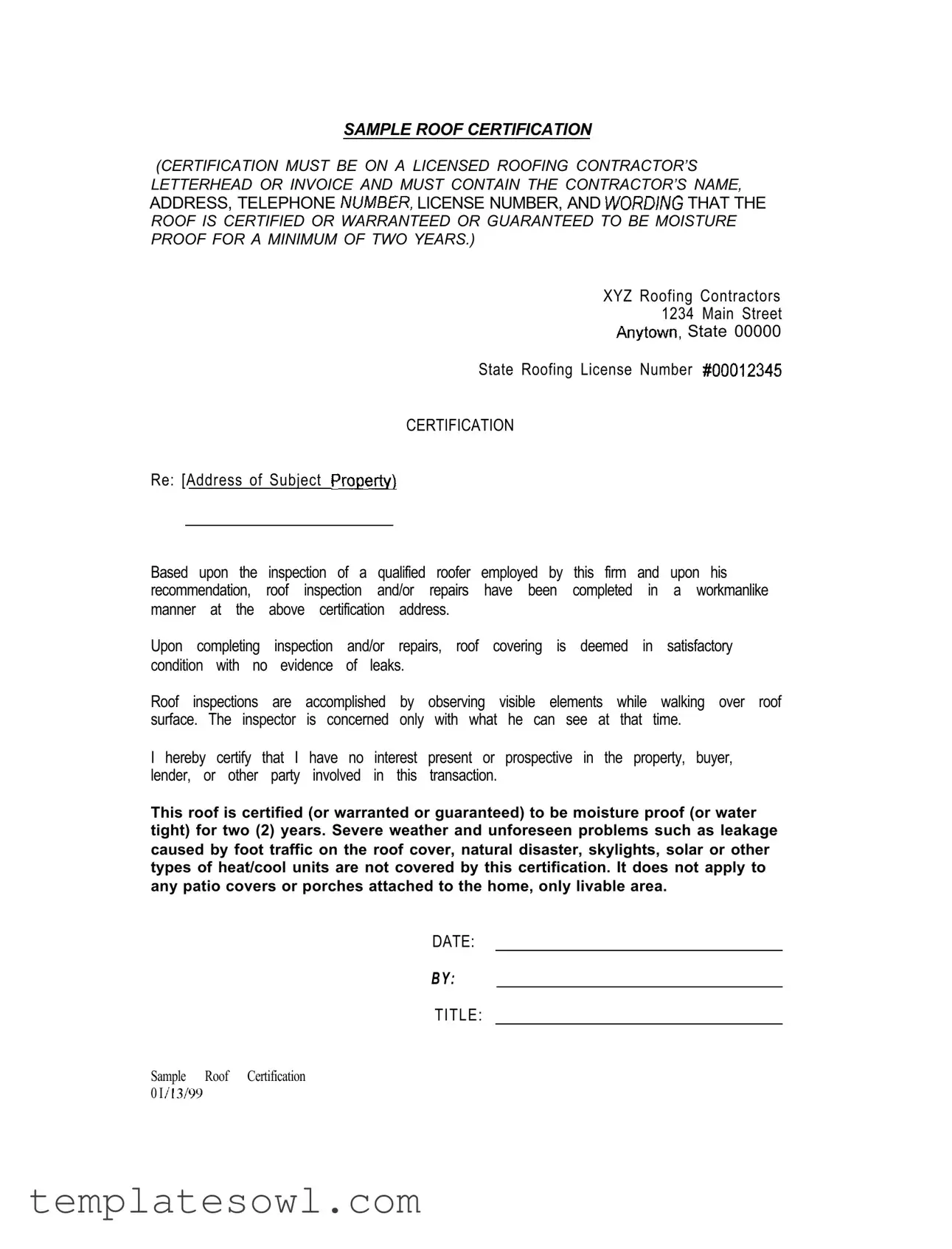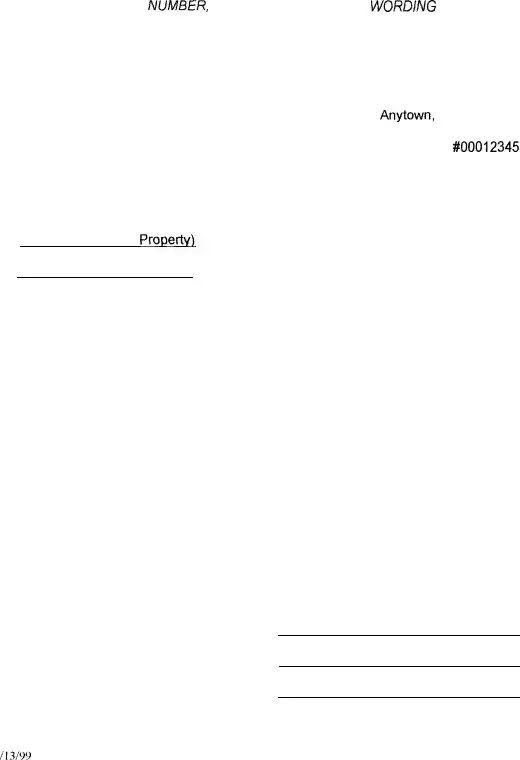What is a Roof Certification form?
A Roof Certification form is a document provided by a licensed roofing contractor that verifies the condition of a roof. It typically states that the roof has been inspected and deemed satisfactory, meaning there are no visible leaks or issues. Additionally, it often includes a warranty stating that the roof will remain moisture-proof for a minimum of two years.
What information should be included in the Roof Certification?
The form must be printed on the contractor’s letterhead or invoice. It should include the contractor’s name, address, telephone number, and license number. Furthermore, it needs to state clearly that the roof is certified, warranted, or guaranteed to be moisture-proof for at least two years.
Who can issue a Roof Certification?
A Roof Certification can only be issued by a licensed roofing contractor. This contractor should have the necessary qualifications and experience to perform a thorough inspection of the roof and document its condition appropriately.
What does a roof inspection involve?
The inspection is a visual assessment of the roof. It involves walking over the roof surface to observe visible elements. The inspector checks for any signs of leaks or damage. However, it’s important to note that this inspection is limited to what can be seen at that moment.
How long is the Roof Certification valid for?
The Roof Certification is valid for a minimum of two years. During this time, the roof is guaranteed to be moisture-proof, barring any severe weather conditions or unforeseen issues..
Are there any exceptions to the coverage provided by the certification?
Yes, there are exceptions. The certification does not cover damage caused by severe weather, foot traffic, natural disasters, skylights, or heating and cooling units. Additionally, it applies only to livable areas of the property, excluding patio covers or porches attached to the home.
What if repairs are needed after certification?
If issues arise after the roof has been certified, the contractor is not liable if the cause is related to the exceptions mentioned earlier. Homeowners are encouraged to keep regular maintenance checks to avoid unforeseen issues.
Is a Roof Certification necessary for selling a home?
While not always required, a Roof Certification can provide reassurance for potential buyers. It may also help facilitate the sale by verifying that the roof is in good condition, thus preventing future disputes regarding roof issues.
How can I obtain a Roof Certification?
To obtain a Roof Certification, you should contact a licensed roofing contractor. Schedule an inspection to evaluate the roof’s condition. Once the inspection is complete, the contractor will provide you with the certification if the roof is satisfactory.

